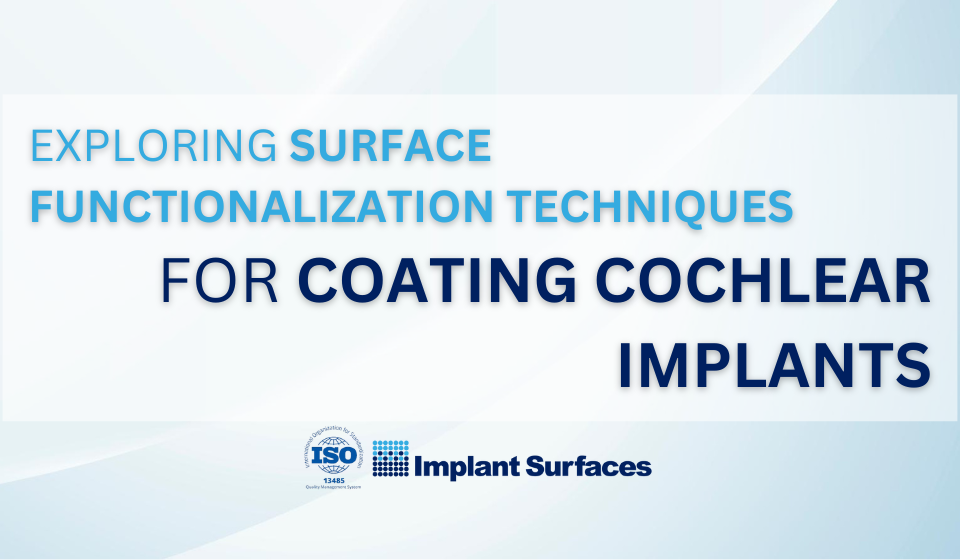
Innovations in Stimuli-Responsive Coatings: Advancing Controlled Drug Release from Implants
April 6, 2024
Biomechanical Considerations in Designing Coatings for Cranial Implants
April 26, 2024In the realm of dental implantology, the quest for enhancing osseointegration and ensuring long-term implant success has been a driving force behind technological innovations. Among these, plasma surface treatment stands out as a game-changer, offering unparalleled advantages in promoting implant integration and overall patient outcomes.
Plasma surface treatment involves the modification of implant surfaces using low-temperature plasma, a state of matter consisting of ionized gases. This technique enables precise control over surface properties, such as topography, chemistry, and energy, which are crucial factors influencing the interaction between implants and surrounding tissues.
One of the key benefits of plasma surface treatment lies in its ability to create a nanostructured surface topography. By inducing controlled micro- and nano-scale roughness on the implant surface, plasma treatment enhances the surface area available for osseointegration and facilitates the formation of a strong bond between the implant and surrounding bone tissue. This nanostructured surface mimics the natural architecture of bone, promoting faster bone apposition and improving implant stability during the initial healing phase.
Furthermore, plasma treatment can be tailored to modify the surface chemistry of dental implants, thereby influencing cellular responses at the implant-tissue interface. Functional groups, such as hydroxyl (-OH) and amino (-NH2) groups, can be introduced onto the implant surface, promoting cell adhesion, proliferation, and differentiation. These chemical modifications enhance the biocompatibility of implants and foster a favorable microenvironment for tissue regeneration, ultimately leading to improved clinical outcomes.
Another notable advantage of plasma surface treatment is its capacity to introduce antimicrobial properties to dental implants. By incorporating antibacterial agents or creating reactive species on the implant surface, plasma treatment can inhibit bacterial colonization and biofilm formation, reducing the risk of peri-implant infections and implant-related complications. This antimicrobial effect is particularly crucial in the oral cavity, where microbial challenges abound, and maintaining peri-implant health is paramount for long-term implant success.
Moreover, plasma surface treatment offers versatility and adaptability, allowing for customization based on specific patient needs and clinical requirements. Whether enhancing soft tissue integration, promoting faster healing, or combating peri-implantitis, plasma treatment can be tailored to address various challenges encountered in dental implant therapy. Additionally, advancements in plasma technology have enabled the development of advanced coatings, such as hydroxyapatite and bioactive ceramics, further expanding the therapeutic potential of plasma-treated implants.
In conclusion, plasma surface treatment represents a revolutionary approach to optimizing dental implant integration and improving treatment outcomes. By harnessing the unique properties of plasma, clinicians can enhance the biocompatibility, antimicrobial efficacy, and osseointegrative capacity of dental implants, paving the way for superior patient care and long-lasting implant success. As research continues to unveil the full potential of plasma technology, its role in shaping the future of implant dentistry is poised to grow exponentially, offering new possibilities for enhancing oral health and restoring smiles with confidence.




